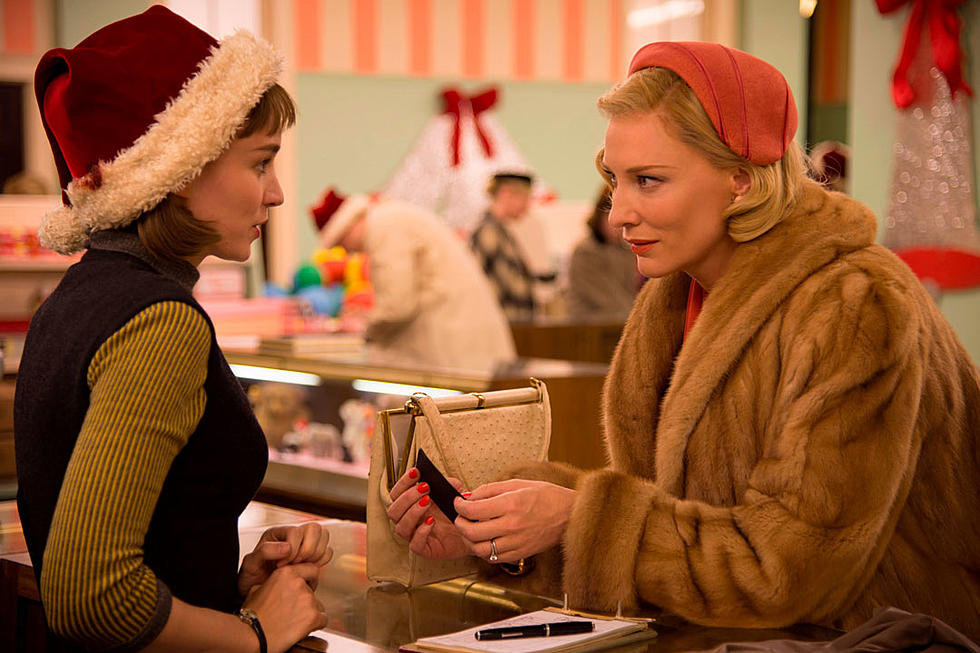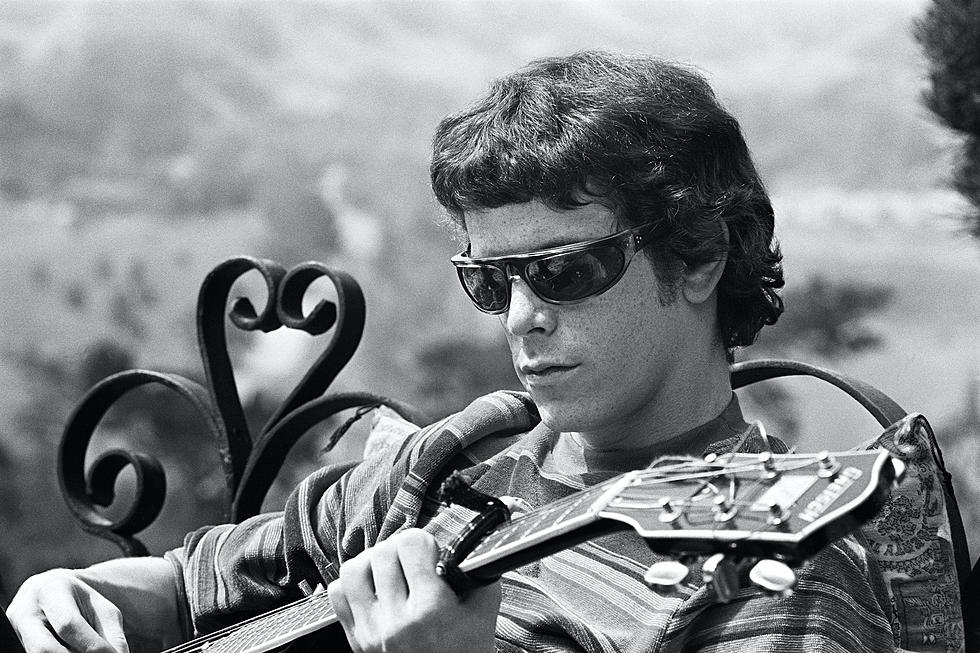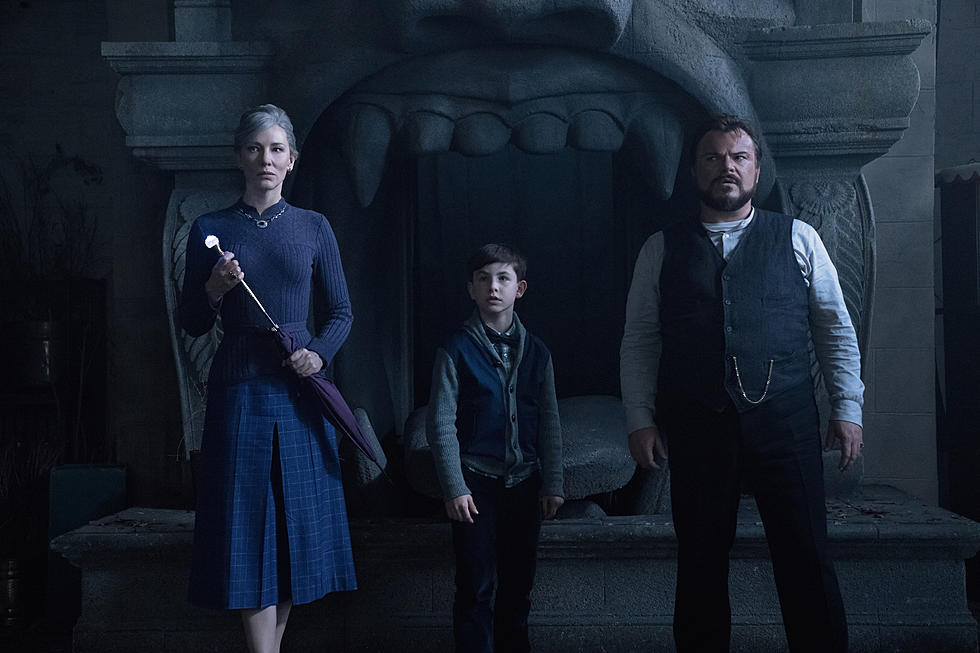
‘Carol’ Review: Cate Blanchett and Rooney Mara Dazzle In This Magnificent Love Story
Few films create a sumptuous experience you want to live in and soak up. They give off a swirl of emotions that you long for, like breathing in the scent of a lover’s sweater, filling your lungs and hoping to save a piece of that memory. That’s the kind of experience Carol concocts, a love story of sublime subtlety where the smallest encounters have the most consuming impact.
Adapted from Patricia Highsmith’s novel, originally titled The Price of Salt, by screenwriter Phyllis Nagy and director Todd Haynes, Carol follows two people falling in love, both of whom happen to be women. In 1950s New York, the timid and indecisive Therese Belivet, played with brilliant restraint by Rooney Mara, works at department store. One morning she walks into work with her doting boyfriend Richard, an aptly cast Jake Lacey playing the saccharine version of his perfectly charming good guy from Obvious Child. The security guard hands the assembly line of employees Santa hats with the same repetitious greeting. After being urged to put her hat on, Therese stands behind the dolls counter and begins her shift as just another smiling, festive employee. But one of these things is not like the others. Though Therese may be the kind of girl who “barely knows what to order for lunch,” she is the kind who acknowledges when something staggering and unexpected walks into her life. That staggering someone is Cate Blanchett‘s poised Carol Aird, a woman whose mere glance jolts a room. Though Blanchett is always a magnetic presence, an actress who radiates a force difficult to shake off, here she gives nothing short of an arresting performance.
The moment Therese and Carol meet eyes everything changes. Captivated, the shy brunette just begins to wake from her stupor. But this is the 50s, a time where women’s freedom of expression and sexuality were stifled and rejected. Though Carol is more comfortable in her attraction to women then Therese, she’s still married to a man in denial of her sexuality. Her husband Harge (Kyle Chandler), proposes a legal “morality clause” against Carol to take their young daughter Rindy from her. Still angry over Carol’s previous affair with her openly gay best friend, Abby (Sarah Paulson), Harge forces Carol to choose between motherhood and romance.
Much like David Lean’s 1945 love story Brief Encounter, Carol explores how love can happen in an instant, a freak accident in the most unexpected of times. While meeting eyes in a department store or snapping photos outside of a christmas tree lot may be passing moments to some, they become the incidents of change for others. After Therese returns Carol’s left behind gloves, Carol asks her to lunch. The reticent Therese says little, but quickly accepts the older woman’s invitation to visit her home. “Strange girl,” Carol says over their matching meals, “Flung out of space.” In comparison to excess of heavy-handed love stories and cliched female romances, Carol itself feels like a shimmering gem flung right out of space. It’s a film which says, emotes and rouses volumes without many words or explanations. We see two interpretations of the same shoulder squeeze, the second of which is like a stab to the gut. If that doesn’t draw tears from your eyes, the breath-stopping final scene will surely leave you shaken.
Watching Carol feels like traveling through a montage of Edward Hopper paintings, both in style and mood. Judy Becker’s production design and Sandy Powell’s gorgeous costumes brings the painter’s visual aesthetic to life on screen. But Haynes also explores what’s within the canvas, contemplating what the lone women within Hopper’s urban landscapes are feeling, thinking, longing for. It’s in the fleeting moments that Haynes elevates the rich nuances of Nagy’s script, extracting the depth and imprint of life’s quiet encounters. One of the most memorable is a scene when Therese gets into Carol’s car. A paralyzing, palpable electricity takes over her as she sits inches from the mysterious woman she’s spent only an afternoon with. The two aren’t touching, they are hardly looking at one another, but Haynes crafts a scene pumped with a warm, swooning tension. Carter Burwell’s phenomenal score swells as Carol’s dialogue drowns to a low muffle. The camera hovers over a lock of her blonde hair then drifts over her gloved hand on the steering wheel, embodying Therese’s wandering gaze as Carol’s presence consumes her. It’s that dizzying chaos, that ineffable throbbing of the heart and the head that grips the senses and slows your breathing when you’re near someone you desperately crave. So close, yet not touching, Carol and Therese grow intoxicated with a hazy mix of love and desire in one of the film’s stillest yet most expressive scenes.
Though based on Highsmith’s openly lesbian novel, and a treasure in light of the lack in realistic onscreen stories about queer women, Carol is so much more. It’d be reductive to categorize it as a lesbian romance. It’s a film that defies labels and rebels against definitions of what love is or should be. While capturing the homophobia of the era, it presents sexuality with shades of nuance and its characters as just people. The magnificence of Carol is in painting a stunning mural where two forces attract outside of spaces of gender, age and societal norms. As one of the most universally relatable love stories of our time, Carol is an experience not to be missed.
More From ScreenCrush









